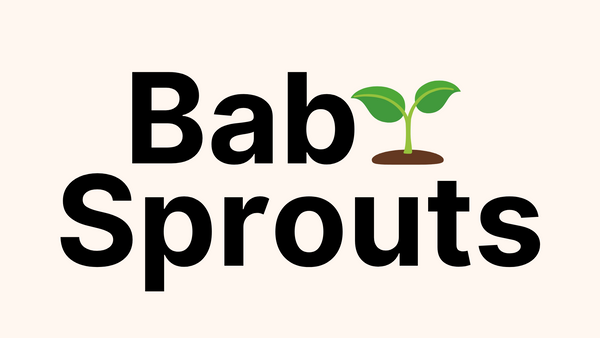
Creating a Safe Sleep Environment: From Baby Bags to Head Protection
Understanding the Importance of Safe Sleep for Babies
The Role of Safe Sleep Products in Infant Development
Safe sleep products play a vital role in a baby's growth and well-being. They help create a secure environment for rest and development. A good night's sleep is crucial for a baby's physical and mental growth. Safe sleep products, like firm mattresses and fitted sheets, reduce the risk of SIDS. They also promote better sleep quality, leading to improved cognitive function and mood regulation. These products support proper posture and spine alignment, aiding in physical development. By using safe sleep products, parents can ensure their baby gets the rest needed for healthy growth.

Key Factors to Consider When Choosing Baby Bedding
When selecting baby bedding, safety should be the top priority. Choose breathable materials to prevent overheating. Avoid loose bedding, pillows, or plush toys that could pose suffocation risks. Opt for fitted sheets that don't come loose easily. Consider hypoallergenic options if your baby has sensitive skin. Look for bedding that's easy to clean and maintain. The material should be soft but firm enough to support the baby. Check for any harmful chemicals or dyes in the fabric. Ensure the bedding meets safety standards set by regulatory bodies. Remember, simplicity is key when it comes to safe baby bedding.
Must-Have Safe Sleep Products for Babies
The Basics: Cribs, Mattresses, and Swaddling
A safe crib is the foundation of a baby's sleep environment. Choose a sturdy crib with fixed sides and slats no more than 2 3/8 inches apart. The mattress should be firm and fit snugly in the crib, leaving no gaps. Look for a mattress that's waterproof and easy to clean. Swaddling can help newborns feel secure and sleep better. Use lightweight, breathable swaddle blankets or sleep sacks. Make sure the swaddle isn't too tight around the hips. As babies grow, transition from swaddling to wearable blankets. These products create a safe base for your baby's sleep routine.

Adding Value: Toys, Bags, and Head Protection
While the basics are crucial, additional items can enhance your baby's sleep environment. Teething toys can provide comfort during restless nights. Choose safe, BPA-free options that are easy to clean. Baby bags are handy for organizing sleep essentials, especially when traveling. Look for bags with multiple compartments and waterproof lining. Head protection, like special pillows, can help prevent flat head syndrome. However, use these only under medical advice. Remember, any items in the crib should be age-appropriate and meet safety standards. Always prioritize a clutter-free sleep space for your baby.
Essential Accessories for Your Baby's Nursery
A well-equipped nursery promotes safe sleep practices. Install a baby monitor to keep an ear out for your little one. Use blackout curtains to create a dark, sleep-friendly environment. A white noise machine can help mask disruptive sounds and soothe your baby. Consider a humidifier to maintain optimal air moisture, especially during dry seasons. A comfortable nursing chair is essential for nighttime feedings. Choose a soft, dimmable night light for diaper changes. These accessories support a conducive sleep environment, making bedtime easier for both baby and parents.
Evaluating and Choosing Safe Sleep Products
Factors to Consider Before Making Your Purchase
When buying safe sleep products, consider your baby's age and development stage. Research product reviews and ratings from other parents. Check for recalls or safety concerns associated with the product. Consider the product's durability and how long your baby will use it. Think about your living space and how the product fits in. Look at the cleaning and maintenance requirements. Consider your budget, but don't compromise on safety for cost. Think about the product's versatility and whether it can grow with your baby. Always prioritize products that meet or exceed safety standards. Remember, the best product is one that fits your baby's needs and your lifestyle.

How to Determine if a Product is Safe for Babies
To ensure a product's safety, start by checking for certifications from recognized bodies. Look for labels indicating compliance with safety standards. Read the product description carefully for age recommendations and safety features. Check the materials used and avoid anything with small parts or toxic substances. Research the brand's reputation and history of recalls. Look for products with rounded edges and non-toxic finishes. Avoid items with strings, cords, or small openings that could trap a baby. When in doubt, consult with your pediatrician. Remember, newer doesn't always mean safer. Sometimes, tried-and-true products have the best safety records.
Tips for Maintaining and Extending the Life of Safe Sleep Products
Proper care of sleep products ensures they remain safe and last longer. Regularly clean all bedding and sleep surfaces according to manufacturer instructions. Inspect products frequently for wear and tear, loose parts, or damage. Replace items that show signs of deterioration. Store products properly when not in use to prevent damage. Follow weight and age limits strictly for all products. Avoid using hand-me-downs without thoroughly checking their condition and safety. Keep products away from heat sources and direct sunlight to prevent material breakdown. Rotate mattresses regularly to ensure even wear. By maintaining your baby's sleep products, you extend their life and ensure continued safety for your little one.
